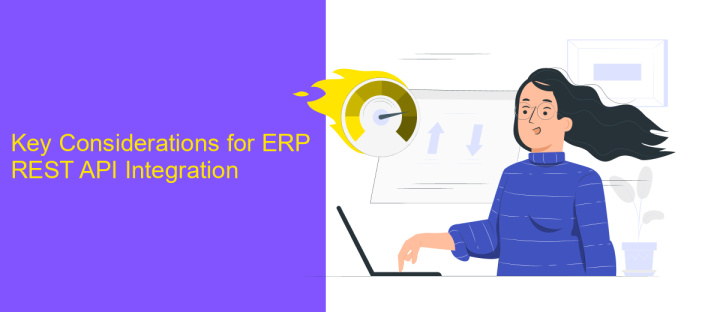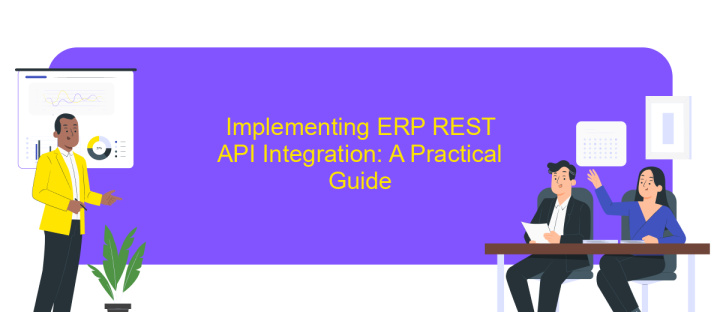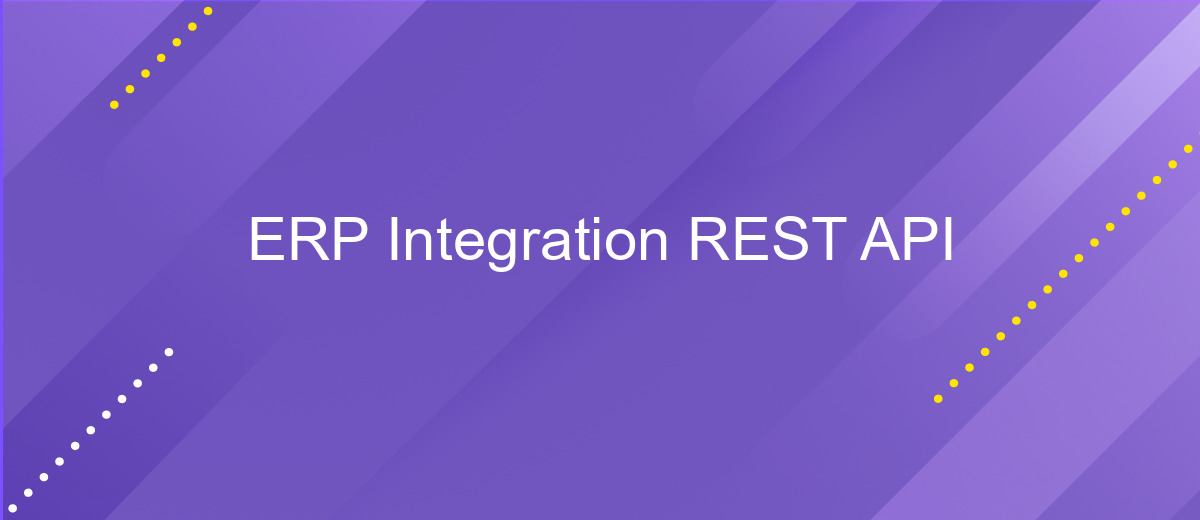ERP Integration REST API
In today's rapidly evolving business landscape, the integration of Enterprise Resource Planning (ERP) systems with REST APIs has become crucial for enhancing operational efficiency and data synchronization. By leveraging REST APIs, businesses can seamlessly connect disparate systems, enabling real-time data exchange and streamlined processes. This article explores the benefits and strategies of ERP integration using REST APIs, highlighting how this approach can drive innovation and competitive advantage.
Understanding ERP Integration and the Role of REST APIs
Enterprise Resource Planning (ERP) integration is a critical aspect of modern business operations, enabling seamless communication and data flow between various enterprise systems. This integration ensures that information is consistently updated, reducing redundancy and improving efficiency across departments. REST APIs (Representational State Transfer Application Programming Interfaces) play a pivotal role in facilitating this integration, offering a standardized approach for systems to interact over the web.
- Scalability: REST APIs provide scalable solutions, allowing businesses to expand their ERP functionalities as needed.
- Flexibility: They offer flexibility in connecting diverse systems, regardless of their underlying technologies.
- Efficiency: By leveraging REST APIs, data exchange becomes more efficient, minimizing manual data entry and errors.
- Security: REST APIs incorporate robust security measures, ensuring safe data transmission between systems.
The use of REST APIs in ERP integration not only streamlines processes but also supports real-time data access, which is crucial for informed decision-making. As businesses continue to evolve, the ability to integrate various systems efficiently becomes a competitive advantage, making REST APIs an indispensable tool in the ERP landscape.
Key Considerations for ERP REST API Integration

When integrating an ERP system with a REST API, one of the primary considerations is ensuring data consistency and reliability. It's crucial to establish a clear understanding of the data flow between the systems, including how data will be transformed and validated during the integration process. This involves setting up robust error-handling mechanisms to manage any discrepancies or failures in data transmission. Additionally, security should be a top priority; ensure that all data exchanges are encrypted and comply with relevant regulations to protect sensitive information.
Another key factor is the scalability and flexibility of the integration solution. As business needs evolve, the integration should be able to accommodate changes without significant downtime or reconfiguration. Utilizing a service like ApiX-Drive can facilitate this process by providing a user-friendly platform to automate and manage integrations efficiently. ApiX-Drive offers a wide range of pre-built connectors and tools that simplify the setup and maintenance of ERP REST API integrations, allowing businesses to focus on their core operations rather than technical complexities.
Implementing ERP REST API Integration: A Practical Guide

Integrating an ERP system using a REST API can significantly enhance business operations by enabling seamless data exchange between diverse applications. The process involves establishing a connection between the ERP system and other software applications, allowing for real-time data synchronization and improved workflow efficiency. This integration ensures that all business units have access to up-to-date information, facilitating better decision-making and operational agility.
- Identify the ERP system's API capabilities and documentation to understand available endpoints and data formats.
- Design the integration architecture, considering security protocols, data mapping, and transformation needs.
- Develop and test API calls to ensure accurate data retrieval and updates across systems.
- Implement error handling and logging mechanisms to monitor and troubleshoot integration issues.
- Conduct thorough testing to validate the integration's functionality and performance under various scenarios.
Successful ERP REST API integration requires careful planning and execution. By following a structured approach, businesses can achieve a robust integration that enhances data accessibility and operational efficiency. Continuous monitoring and optimization are essential to maintain the integration's effectiveness and address evolving business needs.
Best Practices and Common Pitfalls

When integrating ERP systems with REST APIs, it's crucial to prioritize security and scalability. Ensuring that your API endpoints are secure with proper authentication and authorization mechanisms is essential to protect sensitive data. Additionally, designing your API to handle increased loads gracefully will prepare your system for future growth.
Another key practice is to maintain clear and consistent documentation. This helps developers understand how to interact with your API effectively, reducing the likelihood of errors and misunderstandings. Comprehensive documentation should include endpoint descriptions, request and response formats, and examples of common use cases.
- Avoid overcomplicating API design; simplicity aids in maintainability.
- Ensure backward compatibility to prevent breaking changes for existing users.
- Implement robust error handling and provide meaningful error messages.
- Regularly monitor and log API usage to identify and address potential issues early.
Common pitfalls include neglecting to test the integration thoroughly and failing to plan for error scenarios. It's important to conduct extensive testing under various conditions to ensure reliability. Planning for potential failures and implementing strategies for graceful degradation can help maintain a positive user experience even when issues arise.
Future Trends in ERP REST API Integration
As businesses continue to embrace digital transformation, the integration of ERP systems with REST APIs is expected to evolve significantly. One emerging trend is the increased use of artificial intelligence and machine learning to enhance data analytics and decision-making processes within ERP systems. These technologies will enable more predictive and prescriptive analytics, allowing businesses to anticipate market changes and respond proactively. Additionally, the demand for real-time data processing and seamless connectivity will drive the development of more robust and flexible APIs, facilitating smoother integration across various platforms and applications.
Another trend is the growing reliance on integration platforms as a service (iPaaS) solutions like ApiX-Drive, which simplify the integration process by providing pre-built connectors and automated workflows. These platforms reduce the complexity of integrating disparate systems, enabling businesses to focus on core operations while ensuring data consistency and integrity. Furthermore, as data privacy regulations become more stringent, there will be an increased emphasis on secure API integrations, with enhanced authentication and encryption protocols to protect sensitive information. Overall, the future of ERP REST API integration looks promising, with advancements aimed at improving efficiency, security, and business agility.
FAQ
What is ERP Integration REST API?
How does ERP Integration REST API work?
What are the benefits of using ERP Integration REST API?
How can I ensure data security when using ERP Integration REST API?
What tools can help with ERP integration using REST API?
Apix-Drive will help optimize business processes, save you from a lot of routine tasks and unnecessary costs for automation, attracting additional specialists. Try setting up a free test connection with ApiX-Drive and see for yourself. Now you have to think about where to invest the freed time and money!

